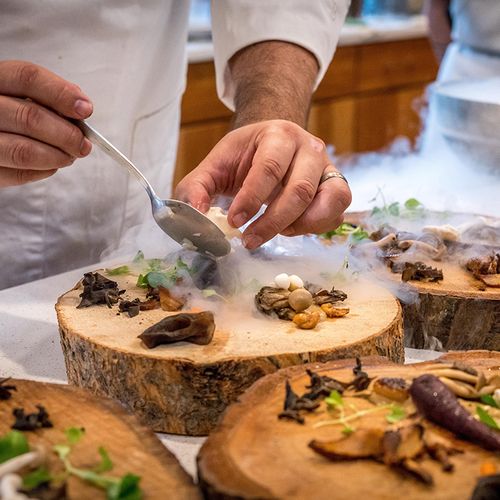There's a pervasive belief that heating foods-especially vegetables-destroys 1 disease-fighting nutrients and digestion-enhancing enzymes. But recent research contradicts the "raw is always best" contention.
Joel Fuhrman, MD, a nutrition researcher, family physician and author of Super Immunity: The Essential Nutrition Guide for Boosting Your Body's Defenses to Live Longer, Stronger and Disease Free, confirmed this. He explained: "With some vegetables, the micronutrients are heat-sensitive and can be destroyed by cooking, But with others, cooking allows the body to absorb more of the beneficial compounds because heat releases the nutrients from the cell matrix to which they are bound."
Which veggies should you cook and which are best raw? Dr. Fuhrman had some specific recommendations…
Best cooked: By cooking a tomato, you break down its cell walls and release more of its lycopene, a cancer-fighting antioxidant. Dr. Fuhrman also suggested cooking carotenoid vegetables (think red, orange and yellow) such as bell peppers, carrots and corn, because the heat increases the bioavailability of their nutrients. He particularly recommended that mushrooms be cooked. "Cooking mushrooms for even a few minutes dissipates most of the mild toxins they contain," he explained. Why eat mushrooms at all if they have toxins? Because they also provide powerful polysaccharides thought to inhibit tumor growth. For instance, one recent study found that eating mushrooms daily was associated with a 64% reduction in breast cancer risk.
Best raw: A vegetable Dr. Fuhrman singled out to eat raw is perhaps the one you'd least want to eat that way-the onion. When you chop an onion, a chemical reaction releases compounds called organosulfides. These compounds cause your eyes to tear...but more importantly, they help halt cancer cell growth and may have anti-inflammatory effects that protect against osteoarthritis. Unless you chop or purée the onion while it is still raw, the organosulfides will not form because heat can deactivate the enzymes that create them. You don't have to eat a raw onion the way you would an apple-just put some slices on your salads and sandwiches. And when you do cook with onions, be sure that they are thinly sliced or chopped and blended into the recipe while still raw so the organosulfides have a chance to form.
Better Broccoli
Beneforté brand broccoli is grown to contain two to three times the normal amount of glucoraphanin, a nutrient that may help to break down fat and lower cholesterol. It tastes sweeter than regular broccoli and contains slightly more cancer-fighting sulphur. Beneforté is available at grocery stores in Alabama, California, Georgia, Minnesota, North Carolina, South Carolina, Tennessee and Texasand is expected in other states by 2014.
Best when raw and cooked are combined: Green cruciferous vegetables such as broccoli, cabbage, collards and kale contain more vitamins and minerals per calorie than any other foods, Dr. Fuhrman said. But some are released when raw and others need to be heated to be bioavailable. In particular, myrosinase, an enzyme that is released only when the cell walls are damaged (for instance, by chewing, chopping or juicing) triggers a chemical reaction that activates the body's own antioxidant system, providing potent protection against cancer. Cooking deactivates myrosinase. So why not always go raw with these vegetables? Because some of their nutrients are more bioavailable when cooked. Dr. Fuhrman recommended eating both raw and cooked green cruciferous vegetables at the same meal—for instance, by having a raw kale salad along with your stir-fried broccoli-and-chicken entrée-because synergistic effects will produce maximum benefits.
- Cooking methods matter. Of course, how you cook has a big effect on veggies' healthfulness. Dr. Fuhrman advised against roasting, grilling or deep frying because high-heat cooking methods that brown, darken or dry out foods lead to the formation of carcinogenic acrylamides. If you love grilled vegetables, choose juicy ones such as tomatoes and peppers, which don't dry out with cooking-their moisture helps keep acrylamides from forming.
Peanuts Have More Protein
Peanuts (a legume) have more protein than tree nuts, and just as much as fish, poultry and red meat, ounce for ounce.
Also: Peanuts contain healthy B vitamins, such as folate...cholesterol-lowering phytosterols...phytochemicals, such as arginine, that help relax blood vessels...and heart-healthy resveratrol.
Other key nutrients in peanuts: Vitamin E, magnesium, iron, copper and potassium.
Healthful Fish at a Good Price
Catfish is an excellent source of vitamin D It has more than 400 international units (IUS) of the vitamin per three-ounce serving, more than many other fish including salmon. It also is an excellent source of protein, contains omega-3 fatty acids and is low in mercury. And it is cheaper than many other fish.
Best: Bake or broil the fish...don't bread or fry it.
Generally, a quick steaming is best because it makes beneficial nutrients more absorbable while causing minimal damage to heat-sensitive ones. Microwaving and sautéing are OK, but take care not to overcook the veggies (which is all too easy to do). Boiling isn't recommended because many nutrients are discarded with the cooking water. Soups and stews are fine, however, Dr. Fuhrman said—water-soluble nutrients are not lost because we eat the tasty liquid portion, too.
